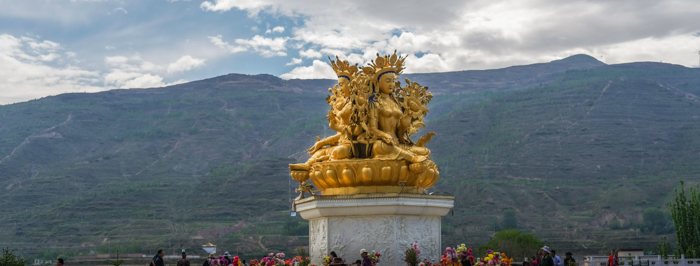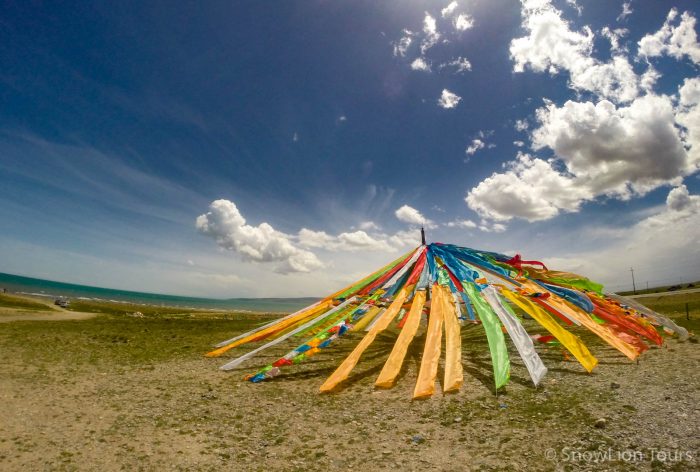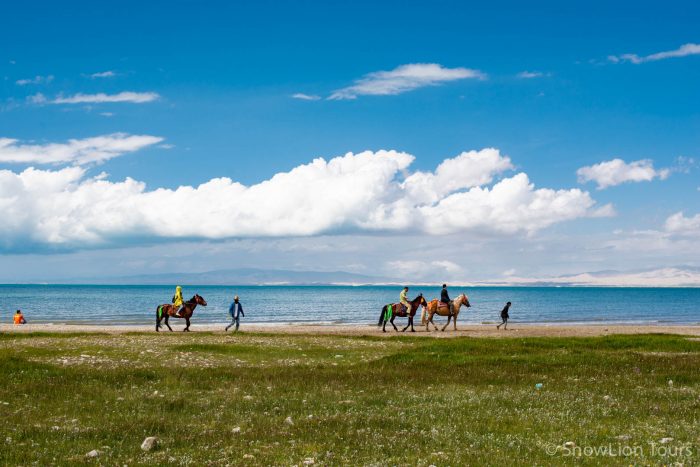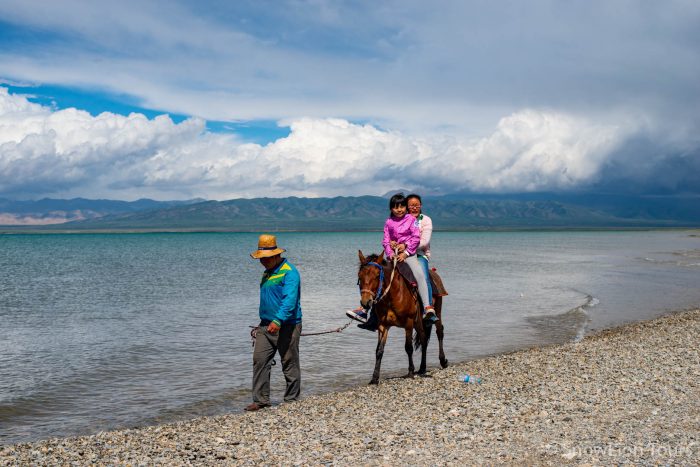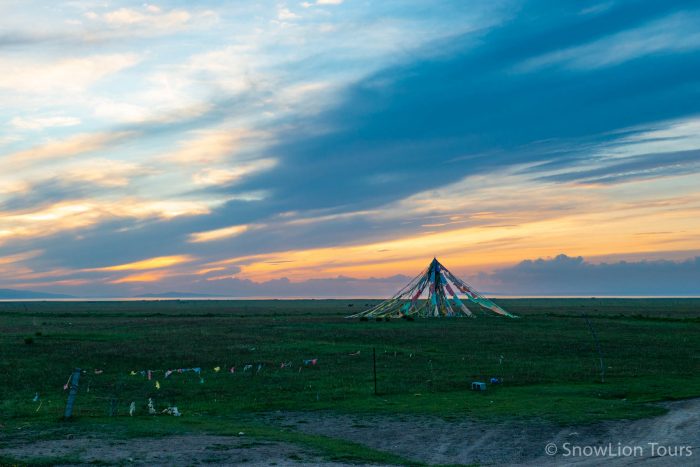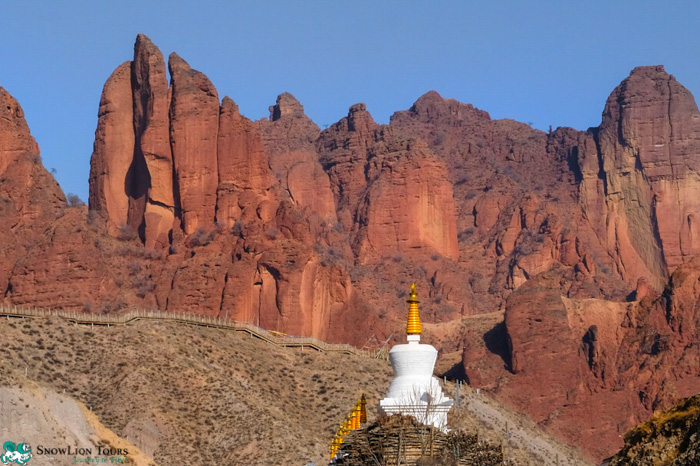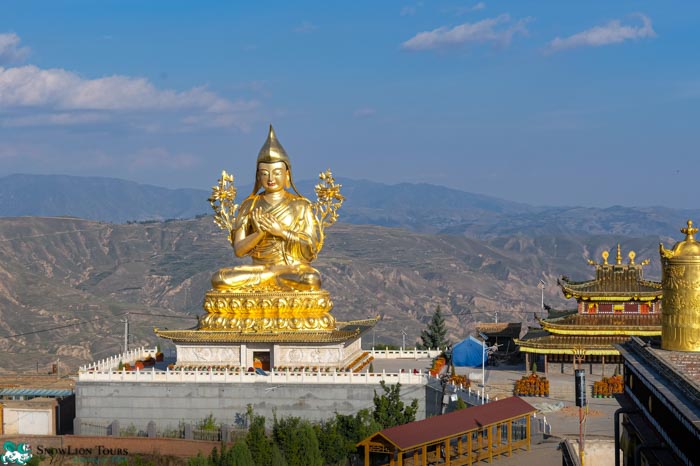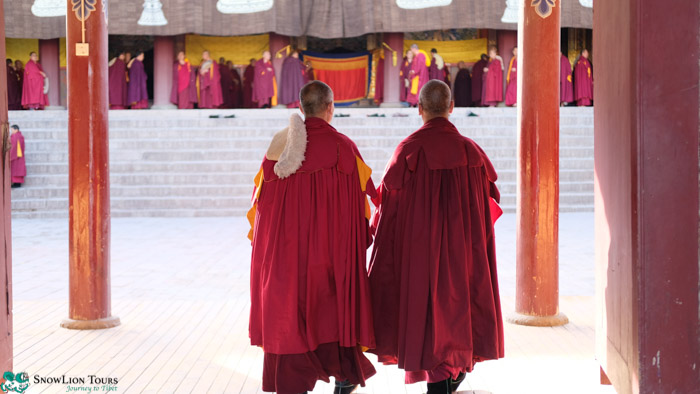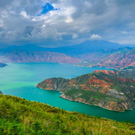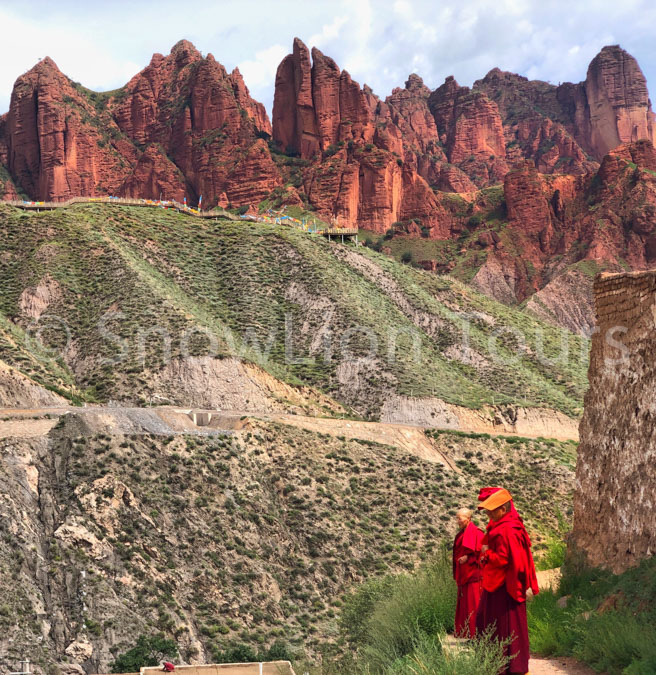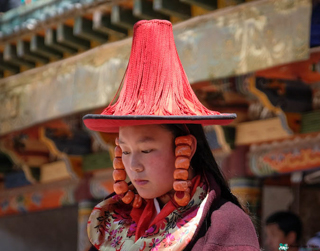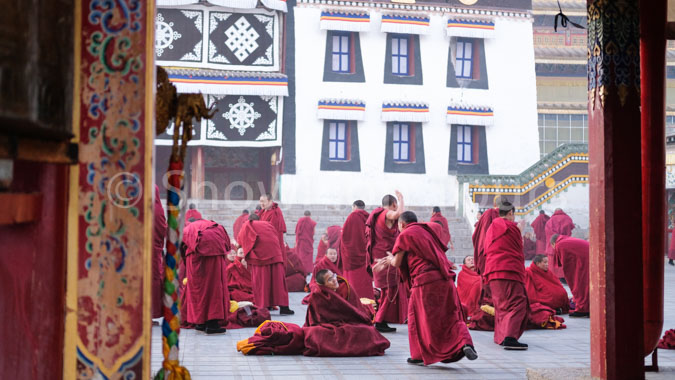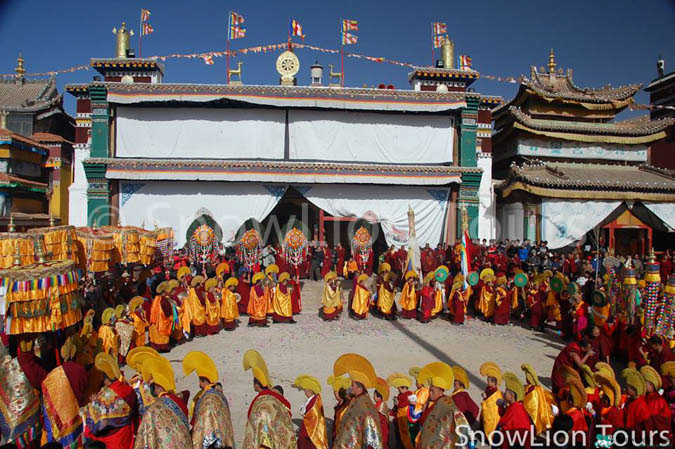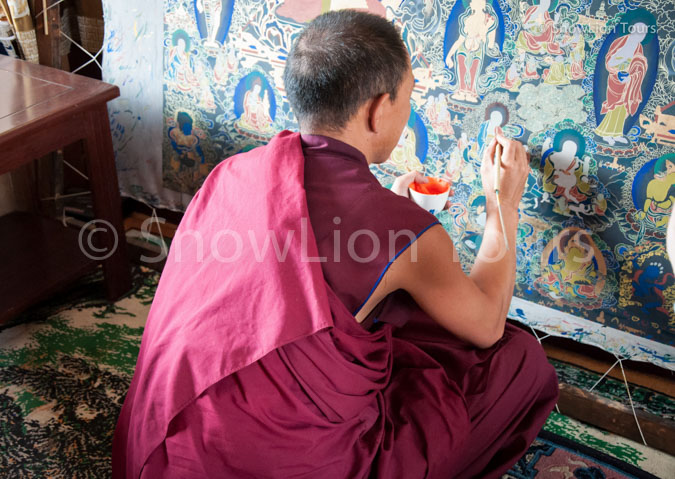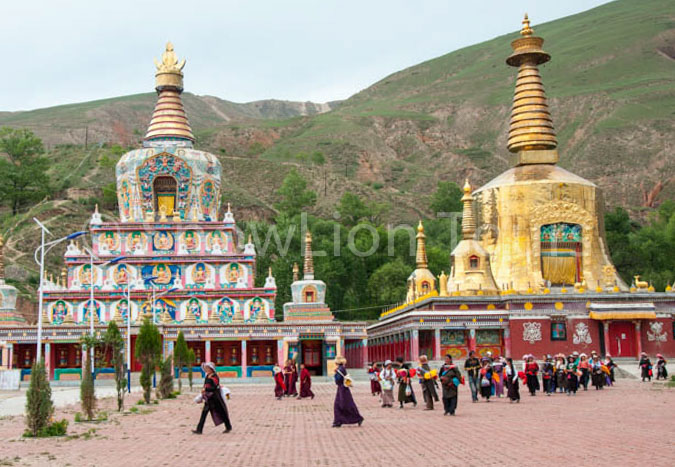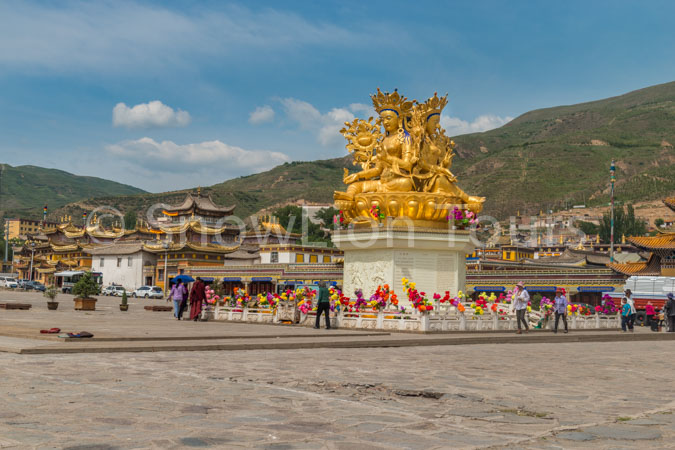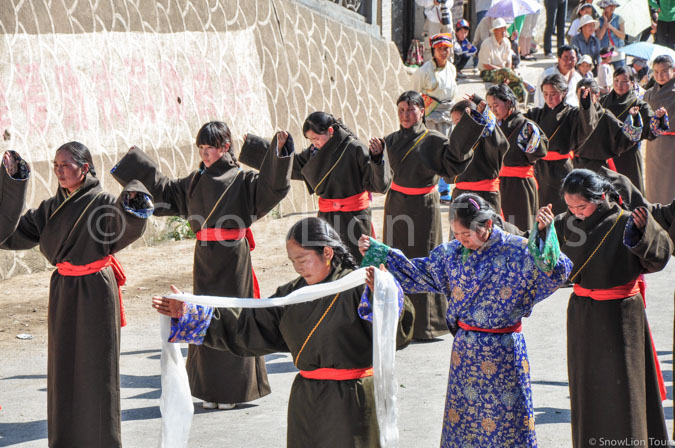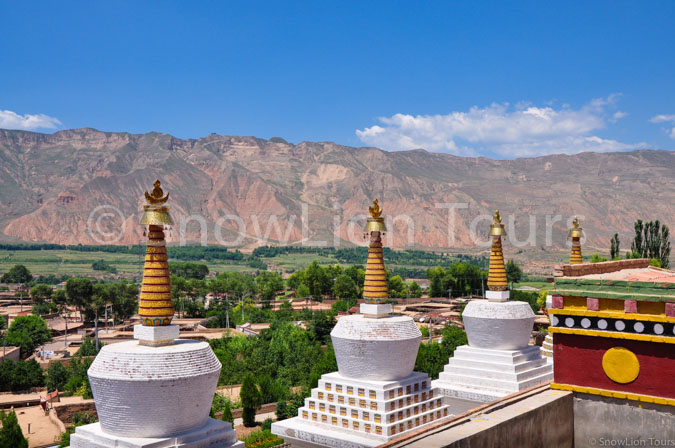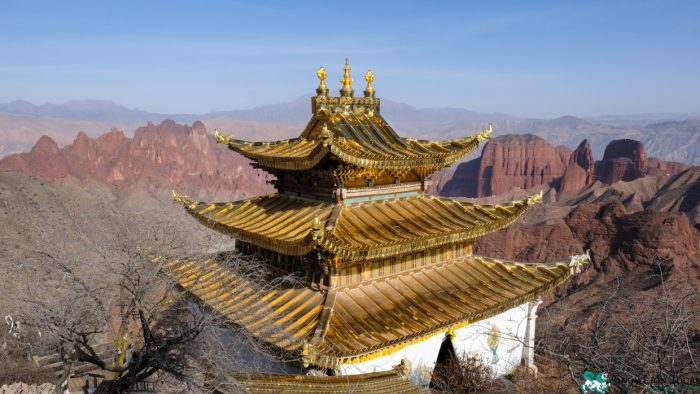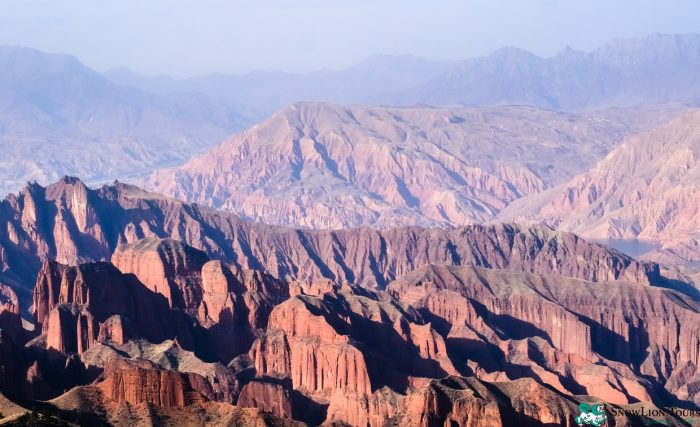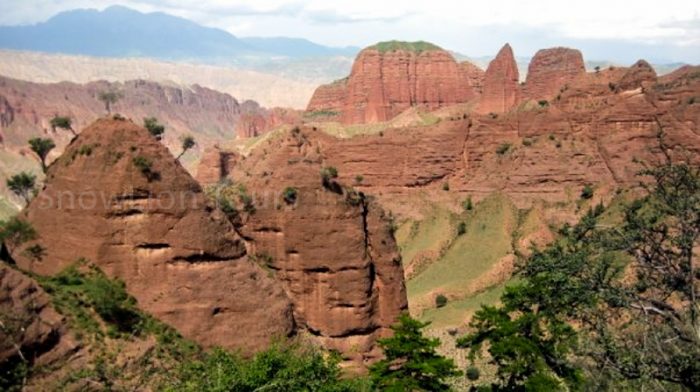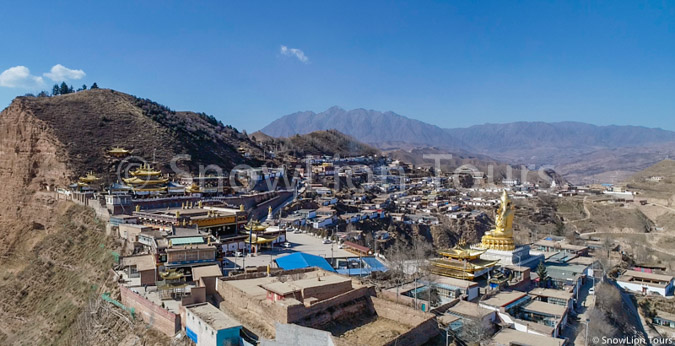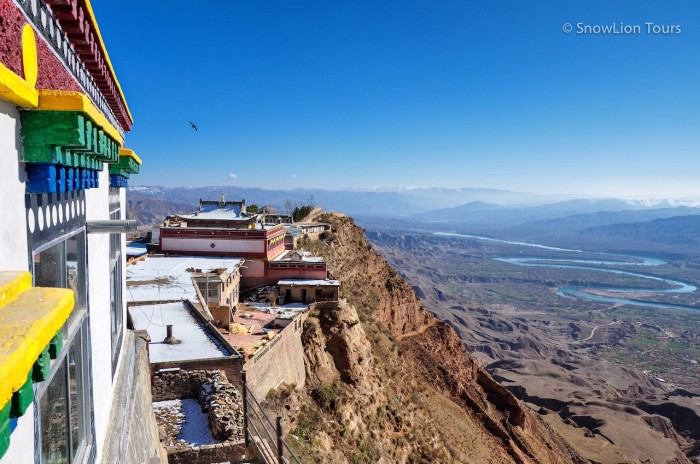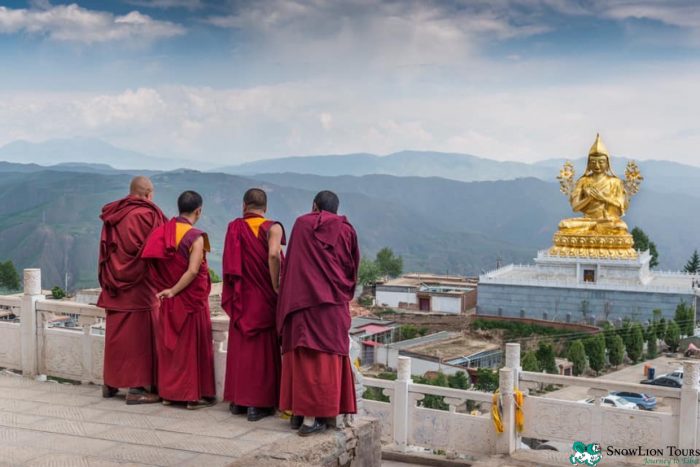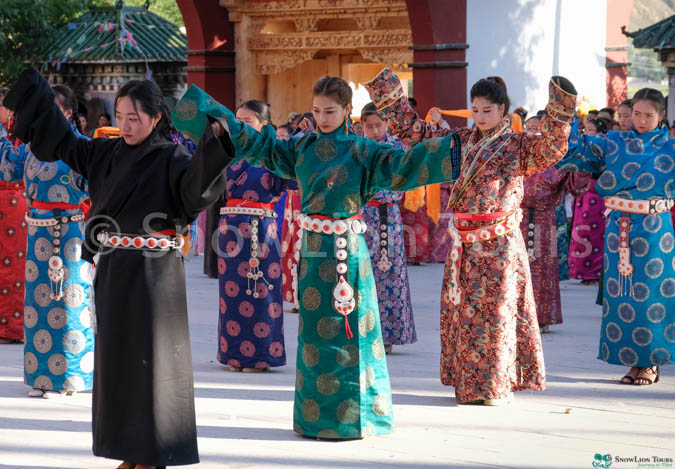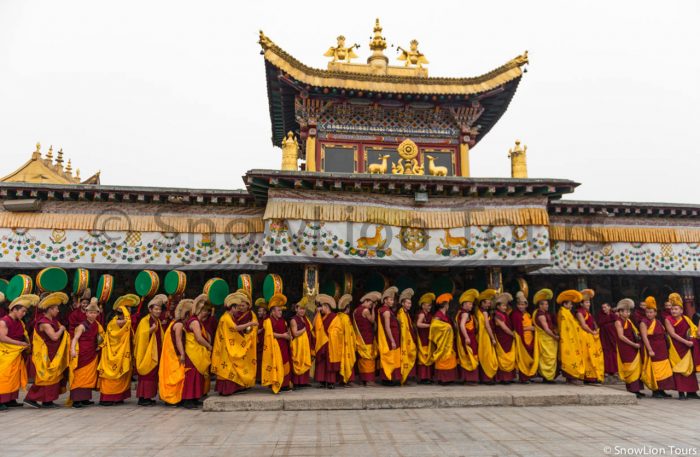Day 1: Xining – Qinghai Lake – Gui’de (Trika) Alt: 2200 m / 300 km
We will begin our journey by driving to the southern shore of Qinghai Lake – the largest lake in China. Qinghai lake also called Kokonor Lake in Mongolian and Tso Ngonpo in Tibetan. Located in Qinghai province on an endorheic basin, Qinghai Lake is classified as a saline and alkaline lake. We will take a shortcut bumping road that takes you directly to the lakeshore to enjoy some peaceful time or try ourselves in horseback riding. After enjoying the lake, we will drive to Gui’de – a beautiful town situated on the bank of the Yellow River. On the way, we will see rolling green hills with local nomads herding their yaks and sheep. Overnight in Gui’de.
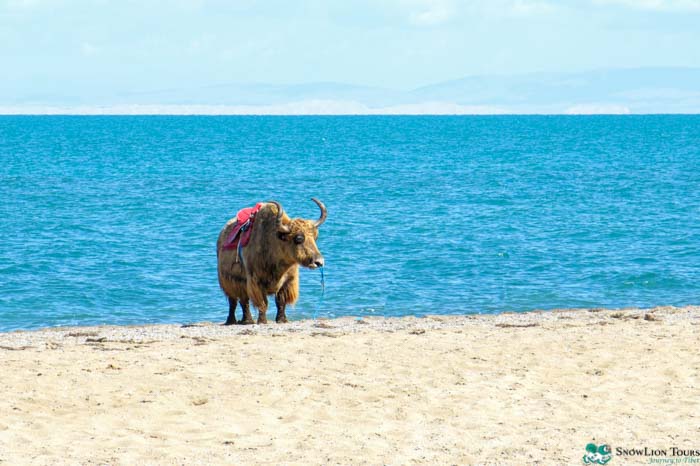
A yak to take photos at the Qinghai Lake.
Day 2: Gui’de – Kanbula National Park – Achung Namdzong Nunnery – Rebkong / Tongren 2480 m / 200 km.
In the morning, we will drive to Kanbula National Park. This park offers one of the most beautiful sceneries in the area, including canyons, red clay peaks, colourful mountains, forests and a gorgeous turquoise lake. Here, we will spend a few hours hiking between the towering red clay mountains, where we can pay a visit to the meditation cave and a small nunnery.
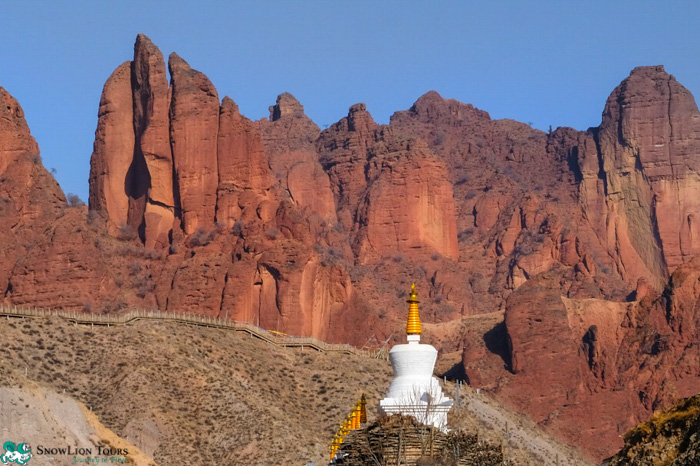
Achung Namdzong Nunnery in Kanbula National Park.
Afterwards, we will drive up to the Tibetan villages, from where we can see another highlight of the Kanbula national park – a vast turquoise lake deeply nested in this vast valley. There are several places to stop while descending from the villages back to the town. In the afternoon, we will continue driving along the Yellow River shores and reach the Tibetan city of Rebkong (Tongren).
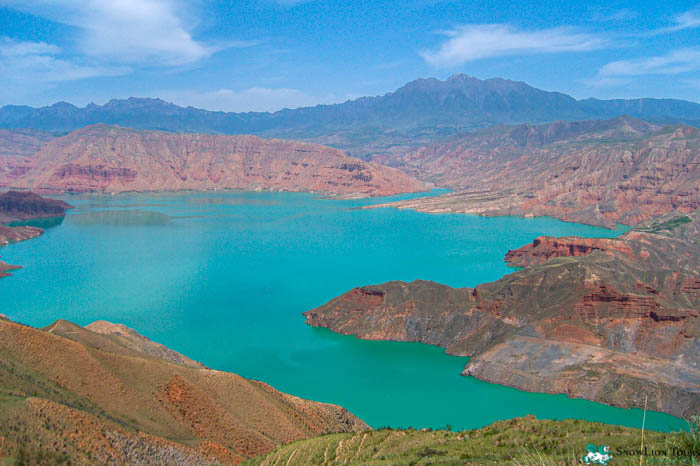
The turquoise Lake inside Kanbula National Park.
Day 3: Rebkong / Tongren – Xining via Shachung Monastery
Today we will have a full day to explore Rebkong – a Tibetan town with many Buddhist monasteries, temples, sacred stupas, and hermitages. First, we will visit the Rongwo monastery, which is the largest monastery in Huangnan Tibetan Prefecture. Rongwo monastery was founded in 1301 by the rulers of Rebkong. Nowadays, it is the main monastery in the area that offers complete monastic education in Gelug tradition. It has three colleges: the Kalacakra College, the Tantric College, and the Dialectic College.
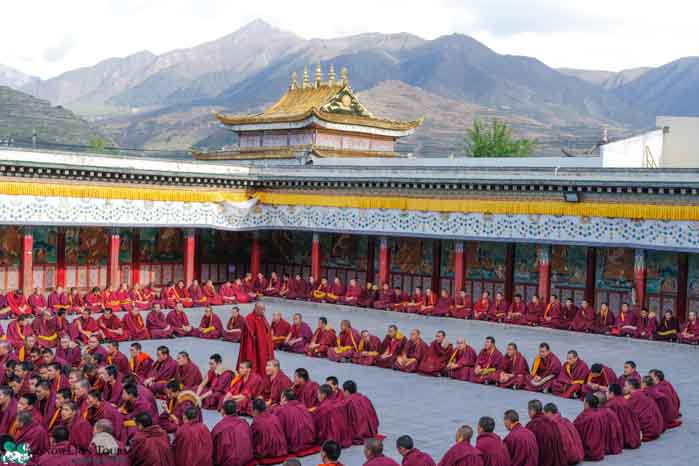
Monks prayer session in Rongwo Monastery.
After exploring the ancient temples of Rongwo monastery, we will drive to Senggeshung monastery, also known as Wutun Si. Wutun Si Monastery is a large complex consisting of several giant stupas, Assembly hall, Tara hall, Compassion Buddha hall, and many other temples. The village surrounding the monastery is primarily known for their thangka painting artists whose skills are famous all over Tibet. We can visit one of the thangka galleries to see how the Tibetan traditional thangkas are made.
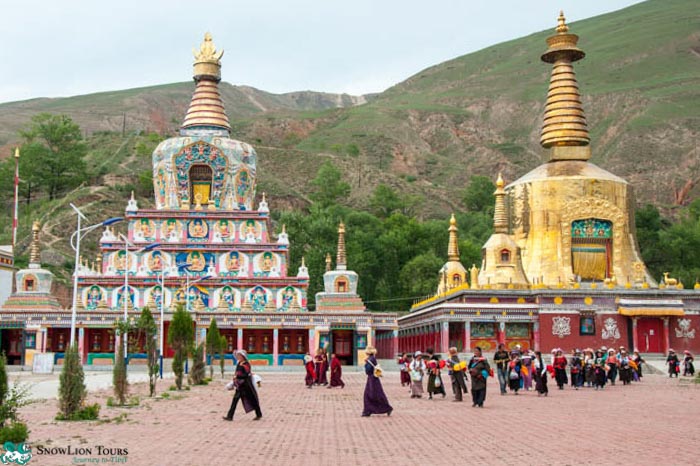
Two giant stupas in Wutu Si Monastery in Rebkong.
Afterwards, we will drive back to Xining via Shachung monastery, one of the oldest monasteries in Qinghai province. We will hike along the mountain ridge from its location on the mountain while taking in views of Tibetan farming fields on one side and of a steep cliff that overlooks the Yellow River on the other side. This part of the Yellow River is the clearest and beautiful and part of the Yellow River in China. The big open valley with bends of Yellow River makes the monastery one of the most beautiful monasteries in Qinghai province.
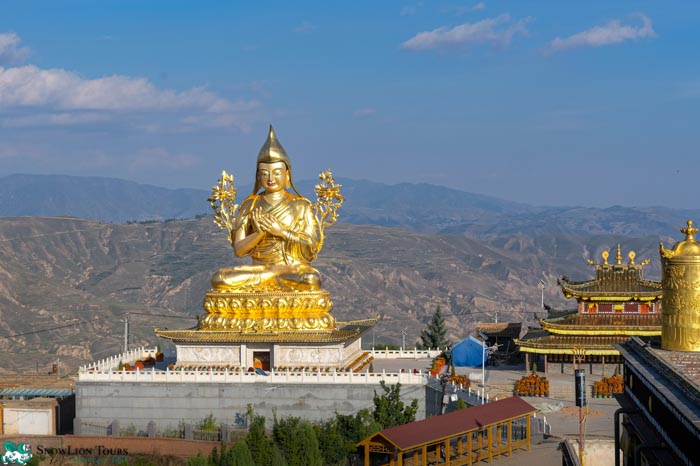
Statue of Tsongkhapa in Shachung Monastery.
We will end our journey by arriving back to Xining in the evening.




